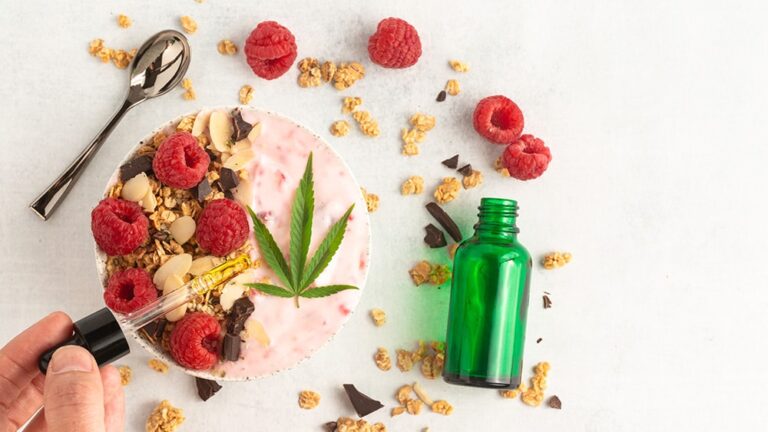
Elevate Your Meals: The Ultimate Guide to Cannabis-Infused Cuisine
Ready to transform your kitchen into a hub of culinary creativity? Cannabis-infused cuisine, also known as edibles, has surged in popularity, blending the art of cooking with the unique effects of marijuana. Whether you’re a seasoned chef or a curious beginner, this guide will teach you how to cook with marijuana, share unique recipes with weed, and provide essential tips for creating safe and delicious foods with THC. From savory snacks to sweet treats, let’s explore the vibrant world of cannabis-infused recipes and elevate your dining experience.
The Allure of Cannabis-Infused Cuisine
Cooking with cannabis is more than just a trend—it’s a culinary revolution rooted in centuries-old traditions. From the bhang lassi of India to the majoun of Morocco, cannabis has been used in food for its medicinal and recreational properties. Today, modern chefs and home cooks are rediscovering this ancient practice, infusing everything from appetizers to desserts with cannabis for a unique flavor and effect.
Why cook with cannabis? Here are some compelling reasons:
- Customization: Tailor flavors, potency, and ingredients to your preferences.
- Discreet Enjoyment: Edibles offer a smoke-free way to consume cannabis.
- Cost-Effective: Making your own edibles can save money compared to store-bought options.
- Creative Freedom: Experiment with bold flavors and innovative recipes.
However, cooking with cannabis requires knowledge and caution to ensure safety and effectiveness. Let’s dive into the essentials.
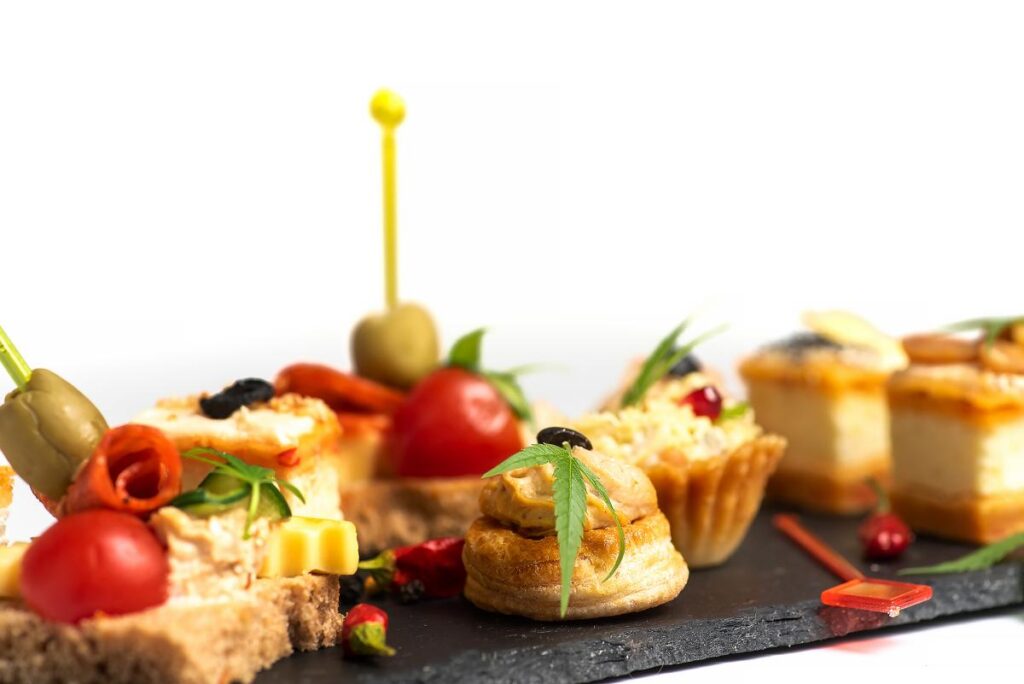
Understanding Cannabis-Infused Food
Cannabis-infused food refers to any dish or beverage containing cannabinoids, primarily THC (tetrahydrocannabinol), the compound responsible for marijuana’s psychoactive effects. Unlike smoking, edibles deliver a slower onset (30 minutes to 2 hours) but provide longer-lasting effects (up to 6-8 hours). This makes precise dosing critical to avoid overconsumption.
The key to effective edibles lies in infusing cannabis into a fat-soluble medium, as cannabinoids like THC are fat-soluble. Common infusion methods include:
- Decarboxylation: Heating cannabis to convert non-psychoactive THCA into THC.
- Infusion: Combining decarboxylated cannabis with a fat (butter or oil) to create cannabutter or canna-oil.
- Tinctures: Infusing cannabis into alcohol or glycerin for use in drinks or recipes.
This guide focuses on the most accessible method: creating cannabutter and canna-oil for versatile use in recipes using cannabis.
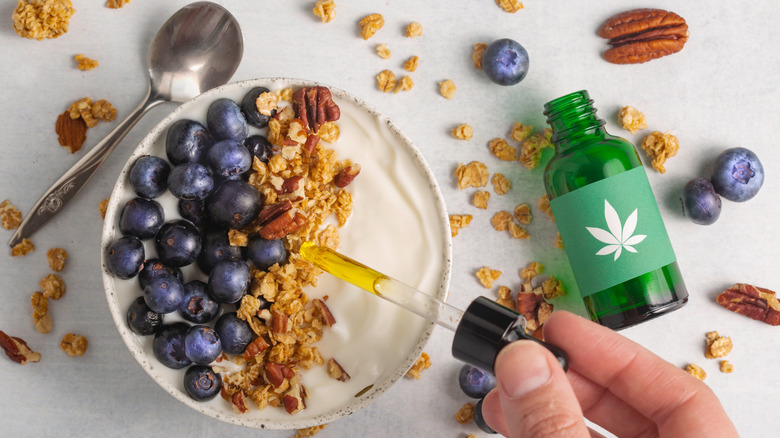
Getting Started: What You Need
Before you start, gather these essentials:
| Item | Purpose |
|---|---|
| Cannabis | High-quality flower or trim. Choose a strain with known THC content. |
| Fat | Butter for cannabutter or oil (coconut, olive, etc.) for canna-oil. |
| Grinder | To finely grind cannabis for even decarboxylation. |
| Double Boiler/Slow Cooker | For gentle heating during infusion. |
| Cheesecloth | To strain plant material from infused fat. |
| Thermometer | To monitor temperature and prevent burning. |
| Airtight Containers | For storing infused products safely. |
Safety Precautions:
- Work in a well-ventilated area, especially when handling high-THC cannabis.
- Wear gloves to avoid skin absorption of THC.
- Keep all cannabis products out of reach of children and pets.
How to Make Cannabutter
Cannabutter is a cornerstone of weed-infused food, perfect for both sweet and savory dishes. Here’s a step-by-step guide:
- Decarboxylate the Cannabis:
- Preheat oven to 240°F (115°C).
- Grind 7g of cannabis finely using a grinder.
- Spread evenly on a parchment-lined baking sheet.
- Bake for 30-40 minutes, stirring halfway, until dry and slightly browned.
- Infuse the Butter:
- Melt 1 cup (227g) of unsalted butter in a double boiler.
- Add decarboxylated cannabis and stir.
- Heat on low (160-180°F) for 2-3 hours, stirring occasionally. Avoid boiling.
- Strain:
- Place cheesecloth over a strainer and pour the mixture through.
- Press the cannabis to extract all butter.
- Let cool and solidify.
- Store:
- Store in an airtight container in the refrigerator for up to 2 weeks or freeze for up to 6 months.
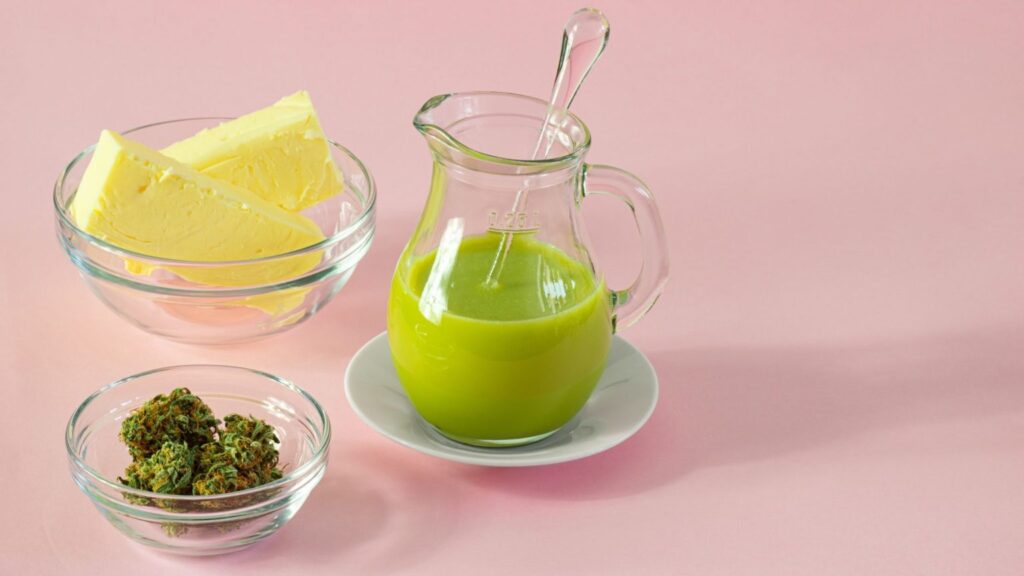
How to Make Canna-Oil
Canna-oil is ideal for savory recipes with weed oil, offering versatility and a longer shelf life. Coconut oil is a popular choice due to its neutral flavor and health benefits.
- Decarboxylate the Cannabis: Follow the same steps as for cannabutter.
- Infuse the Oil:
- Heat 1 cup of oil (e.g., coconut or olive) in a double boiler.
- Add decarboxylated cannabis.
- Heat on low (160-180°F) for 2-3 hours, stirring occasionally.
- Strain and Store:
- Strain through cheesecloth into an airtight container.
- Store in a cool, dark place for up to 3 months or refrigerate for up to 6 months.
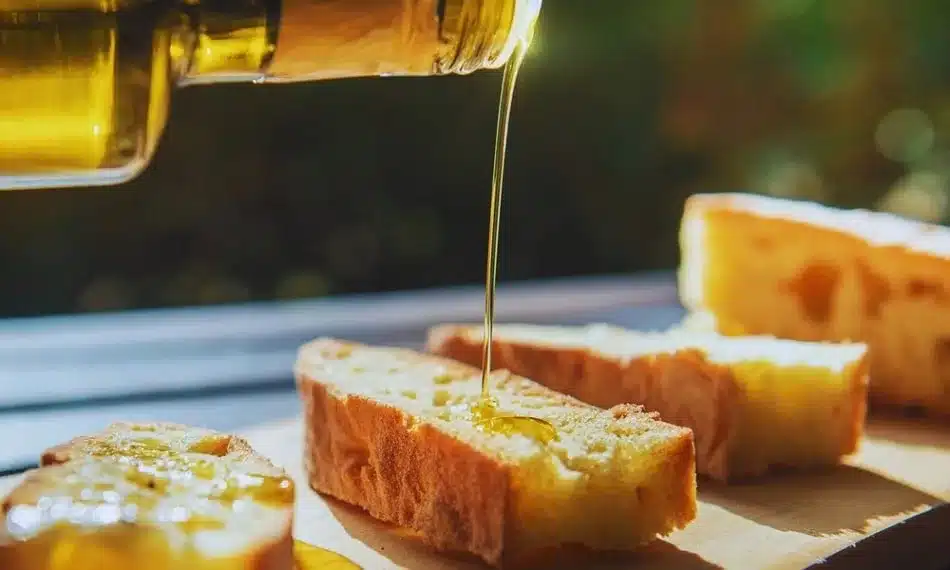
Unique Cannabis-Infused Recipes
Ready to get cooking? Here are four unique recipes with weed that go beyond the classic pot brownie, offering a mix of savory and sweet options.
Cannabis-Infused Guacamole
A zesty, crowd-pleasing dip perfect for parties.
| Ingredient | Quantity |
|---|---|
| Ripe avocados | 3 |
| Tomato, diced | 1 |
| Onion, finely chopped | 1/4 |
| Jalapeño, minced | 1 (optional) |
| Fresh cilantro, chopped | 2 tbsp |
| Lime juice | 1 lime |
| Salt | To taste |
| Cannabutter, melted | 2 tbsp |
Instructions:
- Mash avocados in a bowl until smooth.
- Add tomato, onion, jalapeño, cilantro, lime juice, and salt. Mix well.
- Stir in melted cannabutter slowly, adjusting for desired potency.
- Serve with tortilla chips or as a taco topping.
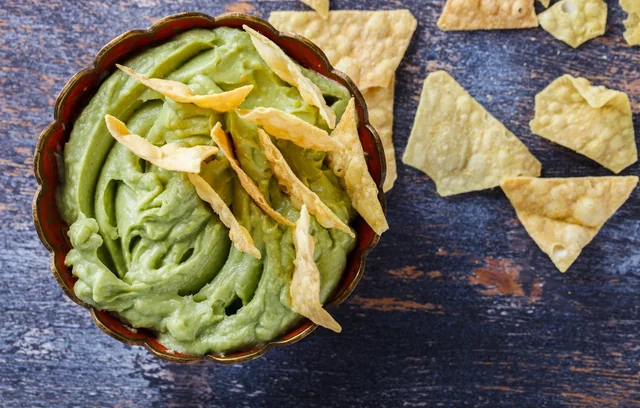
Tip: Start with 1 tbsp of cannabutter for a milder effect.
Cannabis-Infused Honey
A versatile sweetener for teas, desserts, or breakfast dishes.
| Ingredient | Quantity |
|---|---|
| Honey | 1 cup |
| Decarboxylated cannabis | 1/4 cup |
Instructions:
- Heat honey in a double boiler on low.
- Add decarboxylated cannabis and stir.
- Heat for 2-3 hours, stirring occasionally.
- Strain through cheesecloth into a jar.
- Store in a cool, dark place.

Tip: Use in tea or drizzle over yogurt for a subtle cannabis kick.
Cannabis-Infused Pesto Pasta
A savory main course with a vibrant, herby flavor.
| Ingredient | Quantity |
|---|---|
| Pasta | 12 oz |
| Fresh basil leaves | 2 cups |
| Pine nuts | 1/2 cup |
| Garlic cloves | 2 |
| Grated Parmesan cheese | 1/2 cup |
| Canna-oil | 1/2 cup |
| Salt and pepper | To taste |
Instructions:
- Cook pasta according to package instructions.
- In a food processor, blend basil, pine nuts, garlic, and Parmesan.
- Slowly add canna-oil while blending until smooth.
- Season with salt and pepper.
- Toss with cooked pasta and serve immediately.
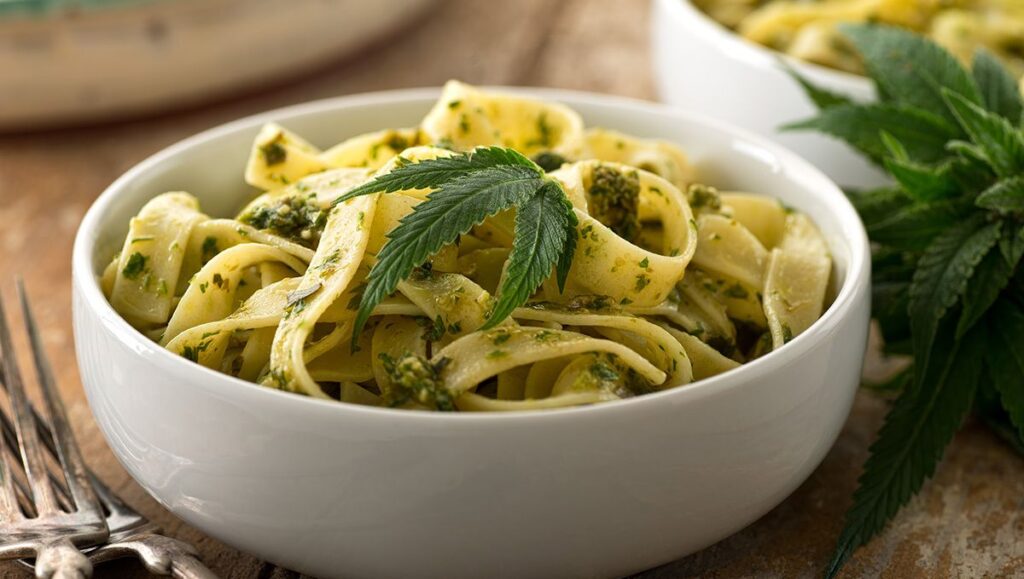
Tip: Pair with a light salad to balance the richness.
Cannabis-Infused Chocolate Truffles
A decadent dessert for a sweet, elevated treat.
| Ingredient | Quantity |
|---|---|
| Heavy cream | 1 cup |
| Dark chocolate chips | 1 cup |
| Cannabutter | 2 tbsp |
| Cocoa powder | For rolling |
Instructions:
- Heat cream in a saucepan until just simmering.
- Remove from heat and add chocolate chips and cannabutter. Stir until smooth.
- Refrigerate for 1-2 hours until firm.
- Scoop into small balls and roll in cocoa powder.
- Store in the refrigerator.
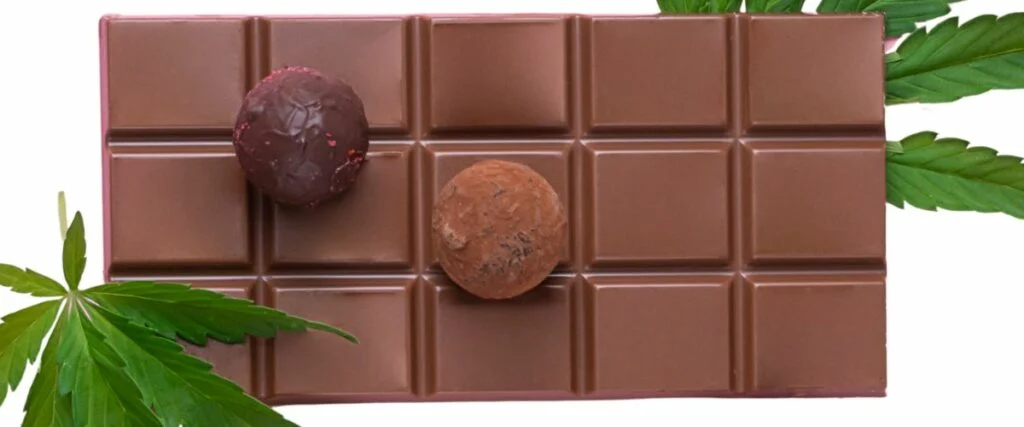
Tip: Serve chilled for the best texture.
Dosage and Safety
Edibles can be potent, so proper dosing is crucial. Here’s how to calculate THC content:
- If you use 10g of cannabis with 20% THC (2g THC total) in 1 cup (227g) of butter, each gram of butter contains approximately 8.8mg of THC.
- A typical beginner dose is 5-10mg of THC per serving. For example, 1 tbsp (14g) of this butter contains about 123mg of THC, so use sparingly (e.g., 1 tsp for a 5-10mg dose).
Safety Tips:
- Start Low, Go Slow: Begin with a small dose (5mg THC) and wait 1-2 hours to assess effects before consuming more.
- Label Clearly: Mark all edibles to avoid accidental consumption.
- Store Safely: Keep edibles in child-proof containers, out of reach of children and pets.
- Avoid Mixing: Don’t combine edibles with alcohol or other substances, as this can intensify effects.
Legal Considerations
Laws surrounding cannabis-infused food vary widely by region. In some areas, recreational or medicinal cannabis use is legal, while in others, it’s strictly prohibited. Before making or consuming edibles, check your local regulations to ensure compliance. For example, in the U.S., states like Colorado and California allow recreational cannabis, but restrictions on THC content or distribution may apply.
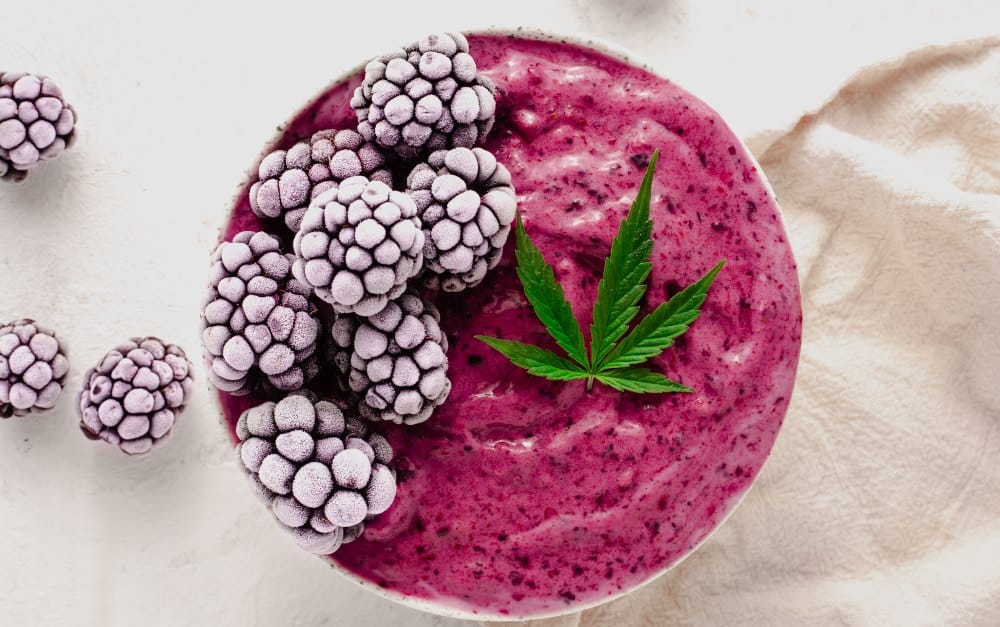
Tips for Success
- Choose Quality Cannabis: Select a strain with a known THC percentage for consistent dosing.
- Experiment with Flavors: Bold flavors like garlic, chocolate, or citrus can mask cannabis’s earthy taste.
- Test Potency: Try a small amount of your infused fat before using it in a recipe to gauge strength.
- Join a Community: Connect with other cannabis cooks on platforms like Reddit’s r/treedibles for recipes and tips.
End Words
Cooking with cannabis is a delightful blend of culinary art and science, offering endless opportunities to create weed-infused food that’s both delicious and effective. By mastering how to cook weed with techniques like cannabutter and canna-oil, you can craft unique dishes like cannabis-infused guacamole or chocolate truffles. Always prioritize safety, start with low doses, and ensure compliance with local laws. With this guide, you’re ready to embark on a flavorful journey into cannabis-infused cuisine. Happy cooking, and enjoy your elevated meals responsibly!


